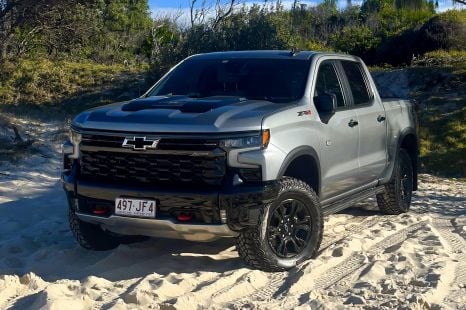

William Stopford
2025 Chevrolet Silverado ZR2 review
1 Month Ago
The Isuzu D-Max is now fresher inside and out, has more safety tech across the range, and is more user-friendly – though it comes at a cost.
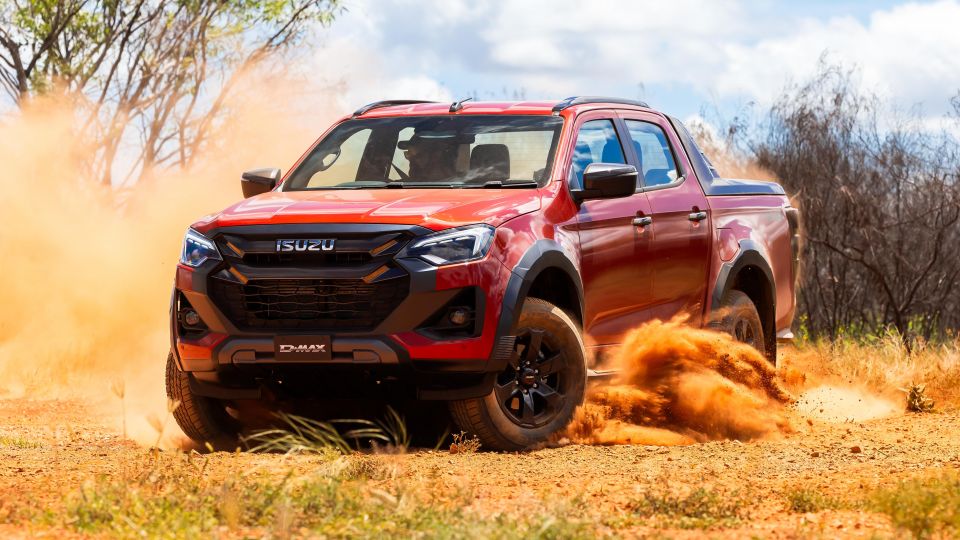
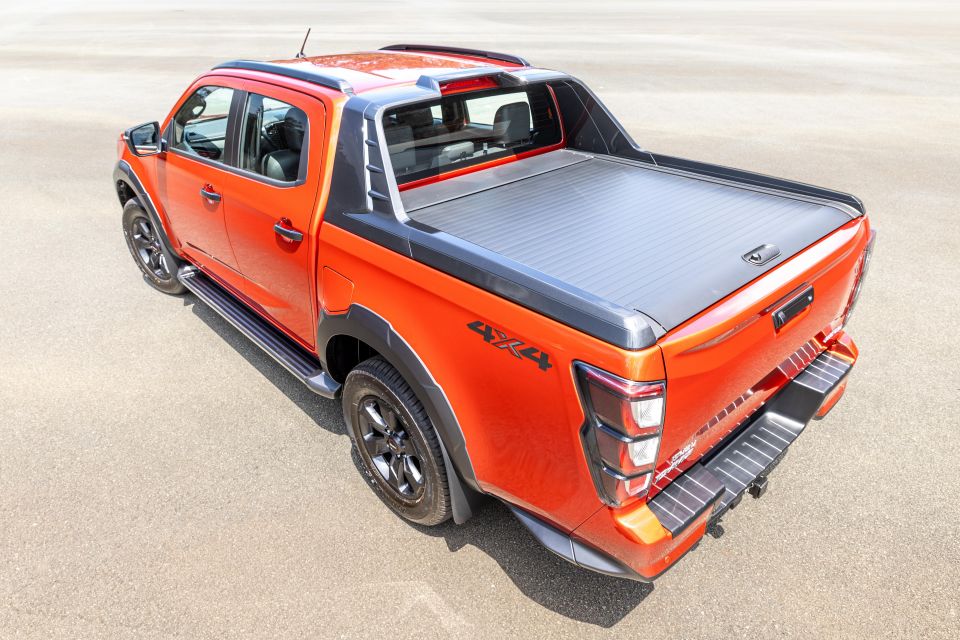

Quickly see how this car stacks up against its competition. Select any benchmark to see more details.
Where expert car reviews meet expert car buying – CarExpert gives you trusted advice, personalised service and real savings on your next new car.
Isuzu Ute Australia’s top-selling vehicle has been given an update that seems skin-deep at a glance, but is more comprehensive when you dig under the surface.

For 2024 the Isuzu D-Max ute has received its most thorough update since the current, third-generation model debuted in 2020.
Outside it receives a tweaked front fascia including new grille designs and air curtains nestled within the fog light area. The front indicators have also been integrated into the headlight assembly.
Other exterior tweaks include new bonnet creases, a revised tailgate, and combination LED tail lights on certain variants.
Inside the ute receives a tweaked instrument cluster, a new touchscreen infotainment system with tuning and volume dials in place of the buttons on the pre-facelift model, and wireless Android Auto among other minor changes.
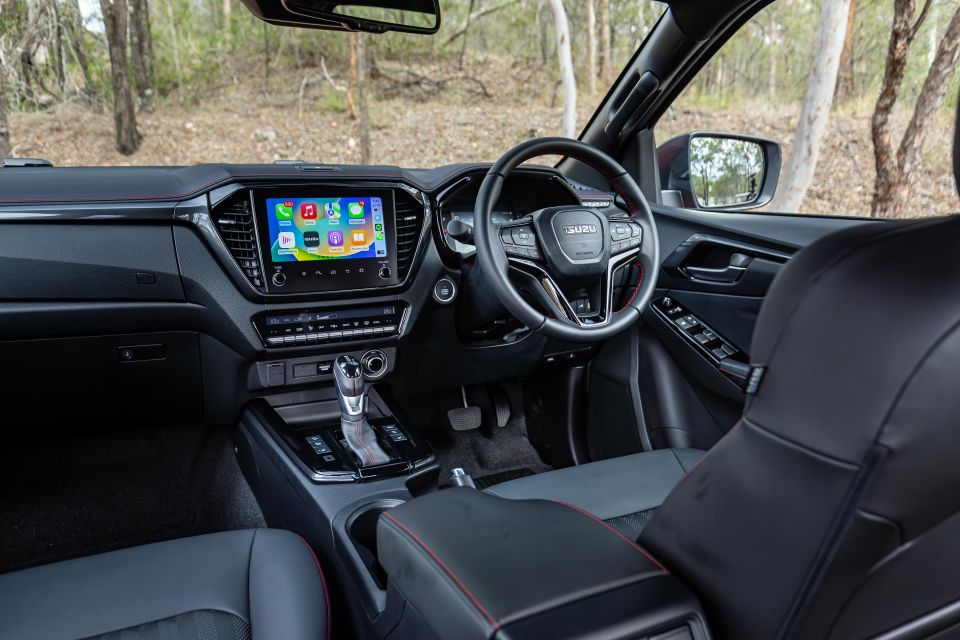
Another major feature D-Max 4×4 models have picked up for 2024 is Rough Terrain mode, an electronic off-road traction control aid debuted in the current MU-X in 2021.
Unlike the system in the MU-X however, Rough Terrain mode is able to work with the rear differential lock, maximising traction.
Updates also include revised tyre pressure monitoring (LS-U and up), a new stereo camera, adaptive cruise control with stop and go across the entire range, updated lane-keep assist, welcome light functions, and a revised reversing camera now fitted to cab-chassis models with has a wider field of view.
The rear cross-traffic alert system has been replaced by a more sophisticated rear cross-traffic assist feature, which will apply the brakes if you’re about to have a collision while reversing.

Lastly, Isuzu claims to have fixed the bump steer issue that was plaguing pre-update models with premature and uneven tyre wear.
Has this update to the D-Max been comprehensive enough? Read along to find out.
A total of 25 variants are offered. Pricing is up by between $500 and $3000, depending on the variant.
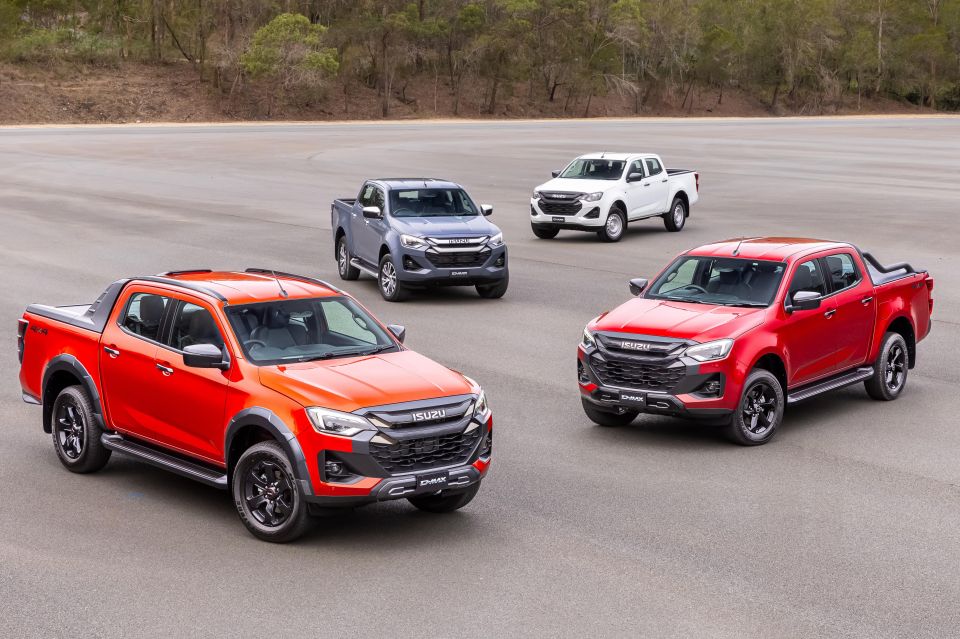
2024 Isuzu D-Max pricing:
4×2
4×4 Cab Chassis
4×4 Ute
Prices are before on-road costs unless specified as drive-away (D/A).
To see how the D-Max compares with its rivals, use our comparison tool.
Buy your new car without the stress. It's fast, simple and completely free.

Great service from Travis and team, second time I have used this business would not hesitate to recommend them to anyone
Craig C.
Purchased a Ford Ranger in Sunshine Coast, QLD
CarExpert helped Craig save $7,224 on his Ford Ranger, now let us save you on your next new car.
Get your BEST priceTo match the subtle exterior design changes the facelifted 2024 Isuzu D-Max has also received some more noticeable tweaks inside.

Hopping in is made easy thanks to the side steps (standard on X-Rider and up), as well as the chunky grab handles. It’s a bit of a climb, but this is fairly common for a ute.
Inside you’re presented with new seat designs depending on the variant you opt for. As expected, pretty much all variants get fabric upholstery with different finishes, and the LS-U+ and X-Terrain receive leather-accented upholstery.
The driving position is commanding which is something ute and SUV buyers look for. It makes them feel like they are more in control of the vehicle because they can see more of their surroundings.
Regardless of which variant you opt for, the D-Max’s front seats are some of the most comfortable and supportive in the segment. I particularly like how there are padded sections where your shoulders sit.
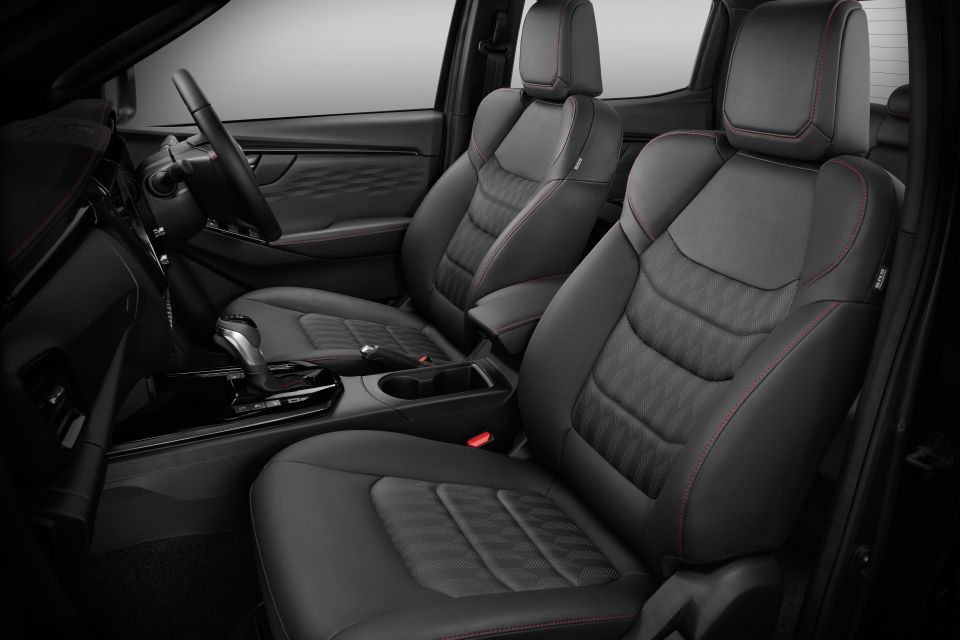
Entry-level D-Max variants receive manually adjustable front seats, though the LS-U+ and X-Terrain receive eight-way power-adjustable front seats with plenty of thigh support which is nice for those with longer legs.
Ahead of the driver is a slightly revised steering wheel which now adopts a new design motif on the centre hub. Pretty much every variant receives a urethane (plastic) steering wheel which feels a little cheap but is hard-wearing, where the LS-U and above gets a leather-wrapped unit which feels more premium.
All the buttons on the steering wheel are logically placed and are easy to understand. They also all have a clicky action which makes pressing them very satisfying.
Behind the steering wheel in lower grades, the 4.2-inch multifunction display and analogue dials for the tacho and speedo have been revised with easier-to-read fonts and graphics. Despite being new, the 4.2-inch supervision display is still on the small side.
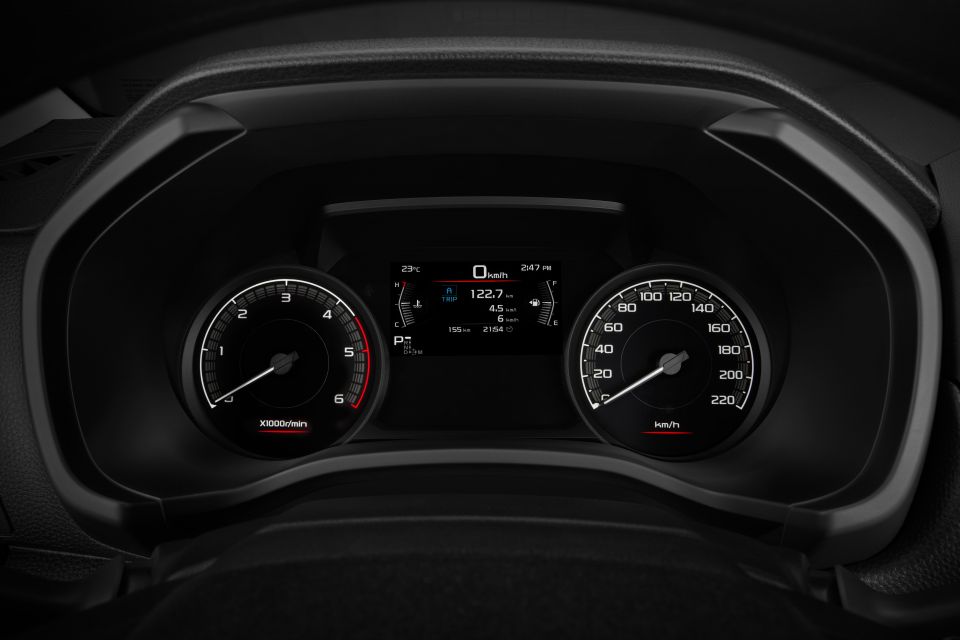
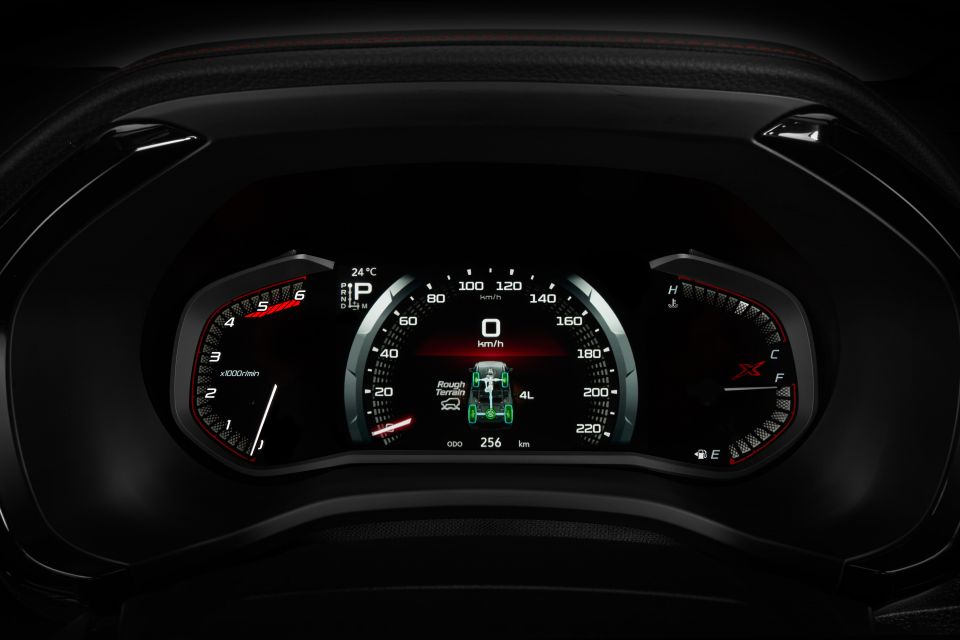
Thankfully if you step up to the LS-U, LS-U+, or X-Terrain you now receive a larger 7.0-inch digital instrument cluster which shows more information, including the tyre pressure and satellite navigation directions. The X-Terrain also receives special graphics.
This high-spec digital instrument cluster is clear and bright, and has a range of menus displaying different content for the driver to glance at while driving.
Moving across Isuzu has treated the entire range to a new infotainment system following feedback regarding the old unit. Entry models now receive an 8.0-inch display (up from 7.0-inch), high-spec models stick with a 9.0-inch unit.
The touchscreen receives software that looks considerably newer and clearer. It also appears to have more processing power which makes opening apps quicker.
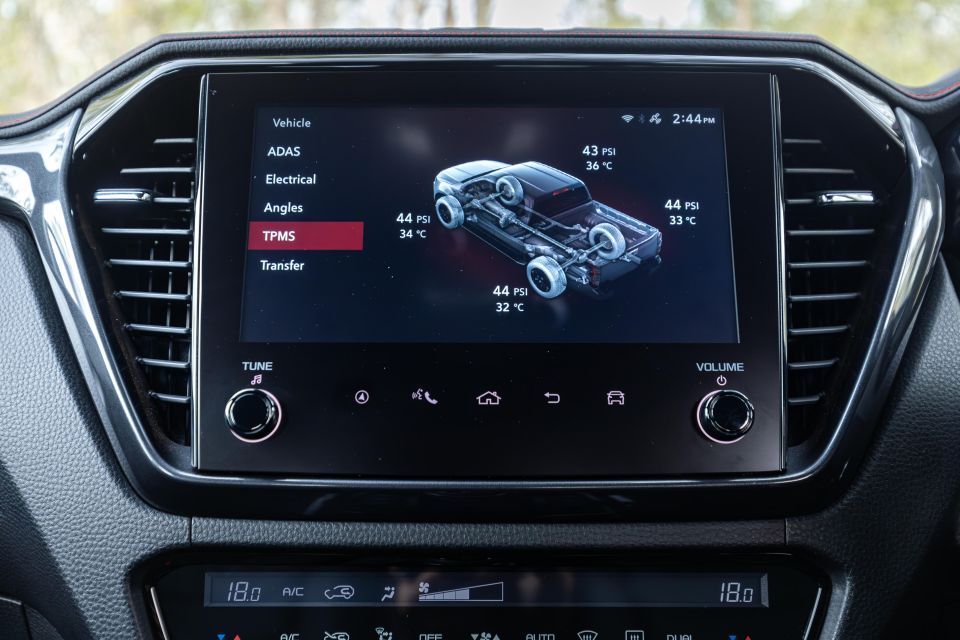
You no longer need to press an ‘Okay’ button to use the touchscreen when the ute first starts up, which sounds small but does make a difference.
The changes aren’t limited to software, as Isuzu has added physical knobs for the volume and tuning in place of the push buttons. This addresses a key complaint from the pre-update model because continually pressing a button to change the volume isn’t very intuitive.
The two knobs under the touchscreen are nicely sized and have satisfying notches when you turn them.
Another change is the inclusion of wireless Android Auto. Previously D-Max owners had to use a USB-A cable to access Android Auto.
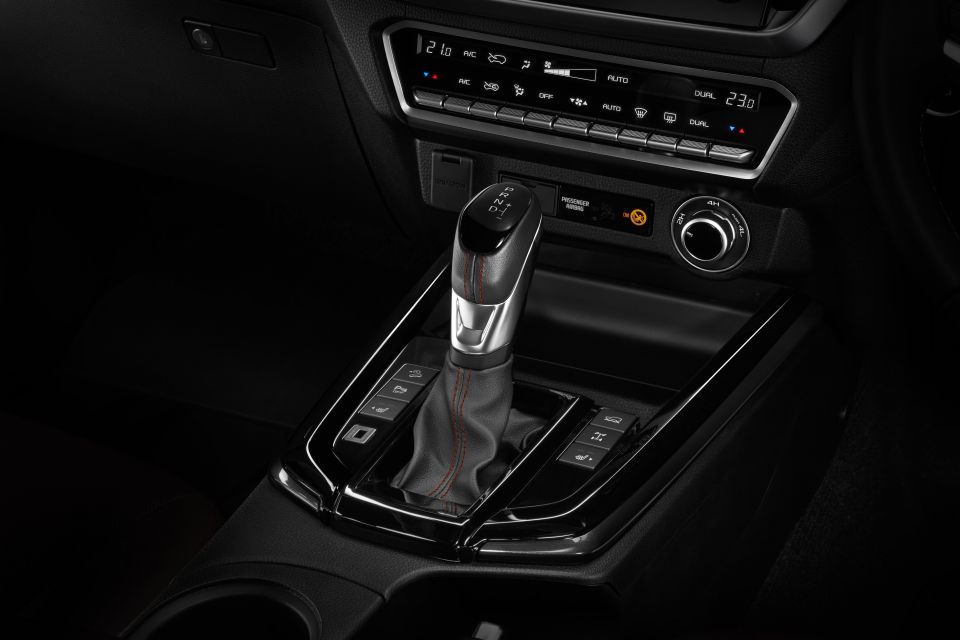
Thankfully both wired and wireless Apple CarPlay are still offered. With my iPhone 15 Pro Max connected wirelessly I didn’t experience any dropouts, though I’d like to withhold full judgement on its reliability until I can drive the ute for an extended period of time.
Disappointingly Isuzu still doesn’t offer a wireless phone charger as standard in the D-Max. It does offer one as a genuine accessory however for $433.27, which slots in ahead of the gear selector.
To negate your phone going flat when using wireless smartphone mirroring you can now plug it into one of the new USB-C ports that replace the USB-A ports in the pre-update model.
Looking around the rest of the cabin changes are kept to a minimum – which isn’t a bad thing because the D-Max still has a wide range of physical controls for functions like climate control and four-wheel drive selection.
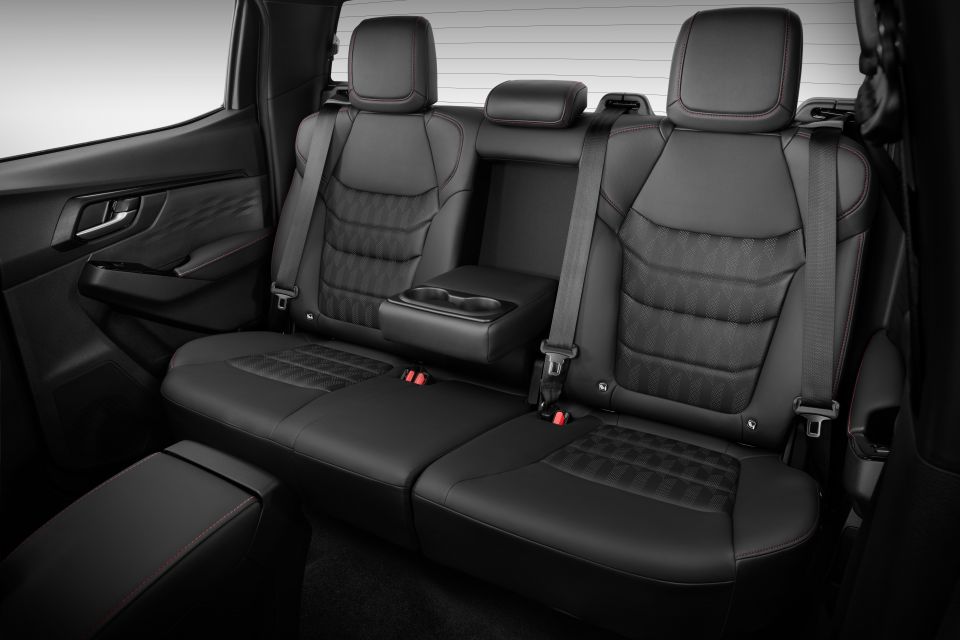

Styling depends on which variant you opt for. SX, LS-M and X-Rider have more hard interior surfaces, whereas the LS-U, LS-U+ and X-Terrain have soft-touch materials on the dashboard, door cards, and armrests.
I like all D-Max variants still have the tradie-style dashboard-mounted cupholders positioned ahead of the air vents, but I’m not a fan of the smudge- and scratch-prone piano black finishes in the flagship X-Terrain.
The D-Max also retains its physical handbrake which is a tactile piece of hardware workhorse ute buyers seek, though it does eat into the centre armrest, making it awkward to rest your elbow on.
In dual-cab variants second-row access is made easy thanks to large grab handles. Once you’re in there’s adequate leg-, head-, shoulder- and toe room for the segment.
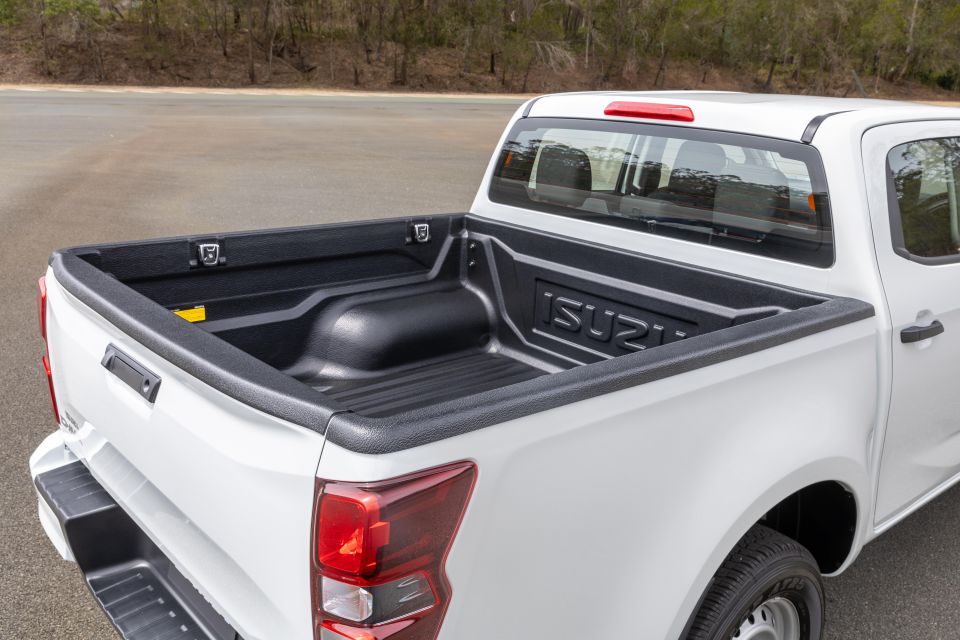
I like the stadium-style seating arrangement which means you sit higher in the second row. This allows for better visibility out of the cabin and can alleviate motion sickness.
In terms of second-row amenities there are centre console-mounted air vents and USB-C ports, as well as a fold-down centre armrest with cupholders.
Around the back all pickup models now receive tailgate assist as standard. This makes opening and closing the tailgate a lot easier and less awkward.
Lastly the tailgate still isn’t included in the central locking which is surprisingly common for the segment. You have to lock the tailgate manually with a key.
The 2024 Isuzu D-Max is available in a wide number of powertrain configurations. There are two turbo-diesel engines, 4×2 and part-time 4×4, as well as six-speed manual and automatic transmission options.
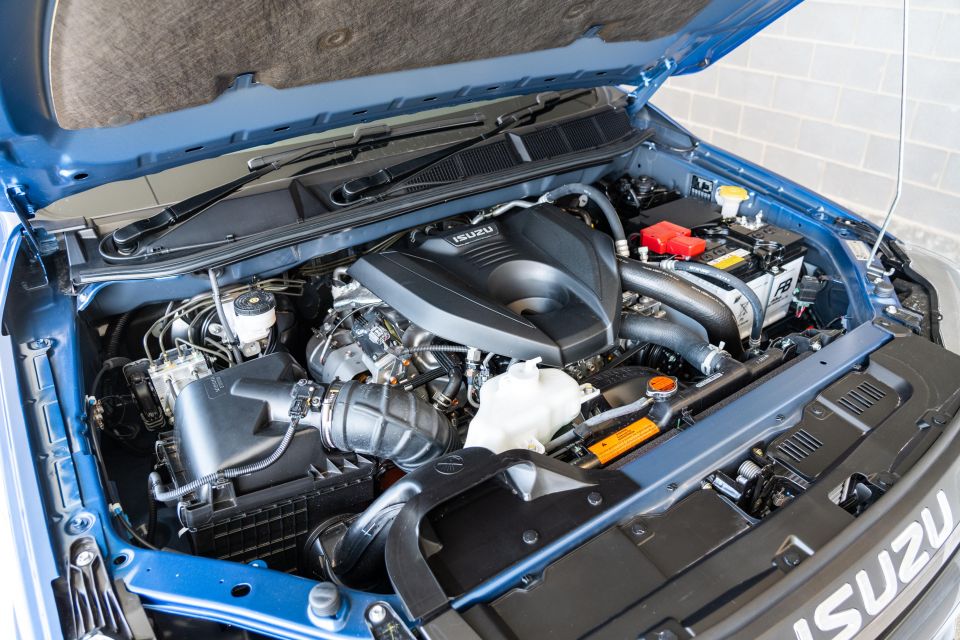
At the local media launch for this ute we sampled a wide array of variants, including a nifty base model 1.9-litre manual SX Single Cab Chassis. For the majority of our time however we stuck to models powered by the 3.0-litre engine with the automatic.
| Model | Isuzu D-Max X-Terrain |
|---|---|
| Engine | 3.0L 4cyl turbo-diesel |
| Power | 140kW (3600rpm) |
| Engine torque | 450Nm (1600-2600rpm) |
| Transmission | 6-speed automatic |
| Driven wheels | Part-time four-wheel drive (2H, 4H, 4L) |
| Weight | 2170kg (kerb) |
| Payload | 930kg |
| Gross vehicle mass (GVM) | 3100kg |
| Unbraked towing capacity | 750kg |
| Braked towing capacity | 3500kg |
| Gross combined mass (GCM) | 6000kg |
| CO (combined claim) | 207g/km |
| Fuel economy (combined claim) | 8.0L/100km |
| Fuel economy (observed) | 8.0-10L/100km 20L/100km (towing) |
| Fuel tank size | 76L |
To see how the D-Max compares with its rivals, use our comparison tool.
It’s worth flagging our drive program at the media launch for the 2024 Isuzu D-Max was limited to controlled driver training courses and off-road obstacles.
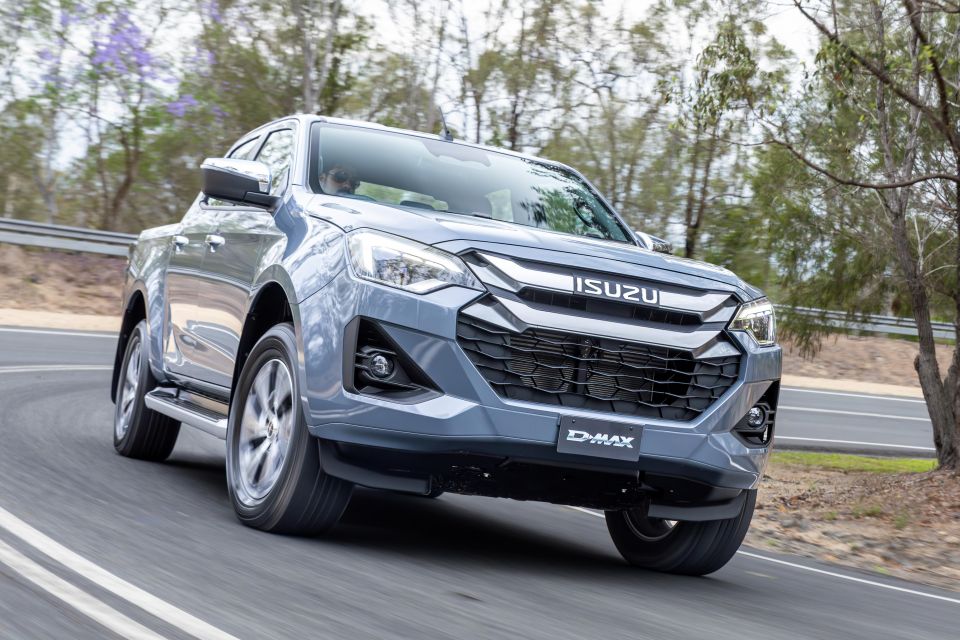
Where expert car reviews meet expert car buying – CarExpert gives you trusted advice, personalised service and real savings on your next new car.
Although our time behind the wheel was brief the D-Max’s fundamentals are unchanged with this update, though it’s worth noting the LS-M and X-Rider now receive a softer and more compliant three-leaf standard-duty rear suspension setup in place of the previous heavy-duty leaf springs.
The LS-M Crew Cab Chassis still sticks with the three-leaf heavy-duty rear suspension setup, however.
Starting up the D-Max you’re still required to use a physical key in the entry-level variants which is a bit of a throwback. Higher-spec models get a push-button start system which feels more current.

When the 3.0-litre four-cylinder turbo-diesel comes to life it has an overtly agricultural idle sound which takes me back to being on the farm and hearing my Dad’s 2000 Holden Rodeo starting up before the sun rose.
Once you take off there’s a confidence-inspiring surge of power and torque from standstill. It allows you to get the jump on the traffic at the lights.
Acceleration remains pretty rapid through the first few gears though if you are a little too liberal with the accelerator on sealed surfaces out of T-intersections the rear wheels can chirp.
All 4×4 Ute variants are now exclusively offered with a six-speed automatic, following the axing of the LS-U Crew Cab Ute 3.0-litre 4×4 manual with this update. You can still get a manual in other body styles and with the smaller 1.9-litre engine.
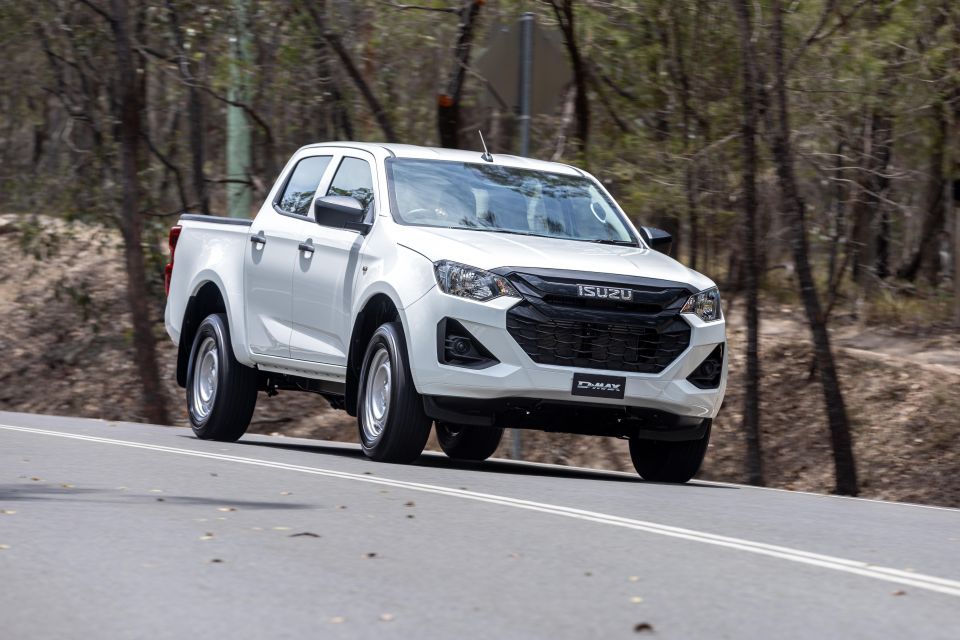
Despite the dwindling manual options, the six-speed auto is a fantastic unit. It performs sweet gear shifts and works in unison with the 3.0-litre turbo-diesel.
Peak torque comes on tap from 1600rpm which means you can lean on the accelerator and it won’t kick down gears to maintain or build up speed. The D-Max feels most at ease when you drive it in a relaxed manner.
In that same vein don’t expect the D-Max to feel very comfortable when driven dynamically. It has a high centre of gravity, meaning it gets the leans in the corners, plus its suspension setup is more geared towards towing and carrying loads.
It’s not uncommon for a ute to feel like this given it has a rear leaf spring suspension setup. Isuzu doesn’t claim the D-Max is a Ranger Raptor rival so this isn’t surprising.
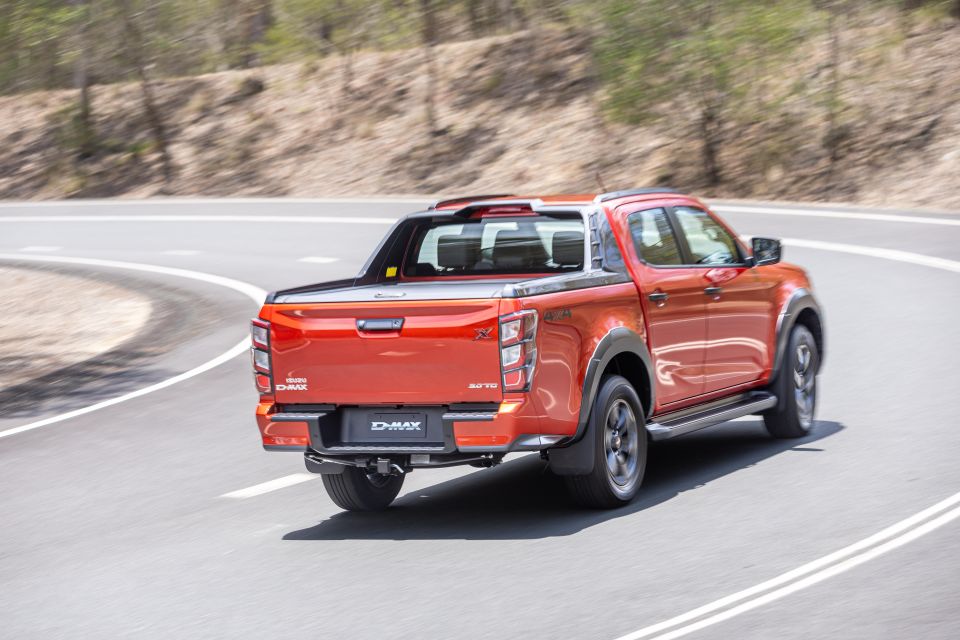
At low speeds the D-Max’s steering is on the lighter side, but that’s not the end of the world as you can still get a sense of what is happening at the wheels. Unlike in the Ranger for example, you still need to do quite a bit of arm twirling in tight spaces.
As standard the D-Max receives a new reversing camera that’s clearer and has a wider field of view than the pre-update model. It does appear to be higher quality, but does look to be a tad fisheye-like.
The reversing camera still isn’t fitted in the middle of the tailgate which means feed shown on the infotainment touchscreen isn’t exactly square. That has an impact if you’re trying to hook up a trailer, for example.
You need to step up to the LS-M Ute in order to receive rear parking sensors, and front parking sensors are reserved for the flagship X-Terrain.
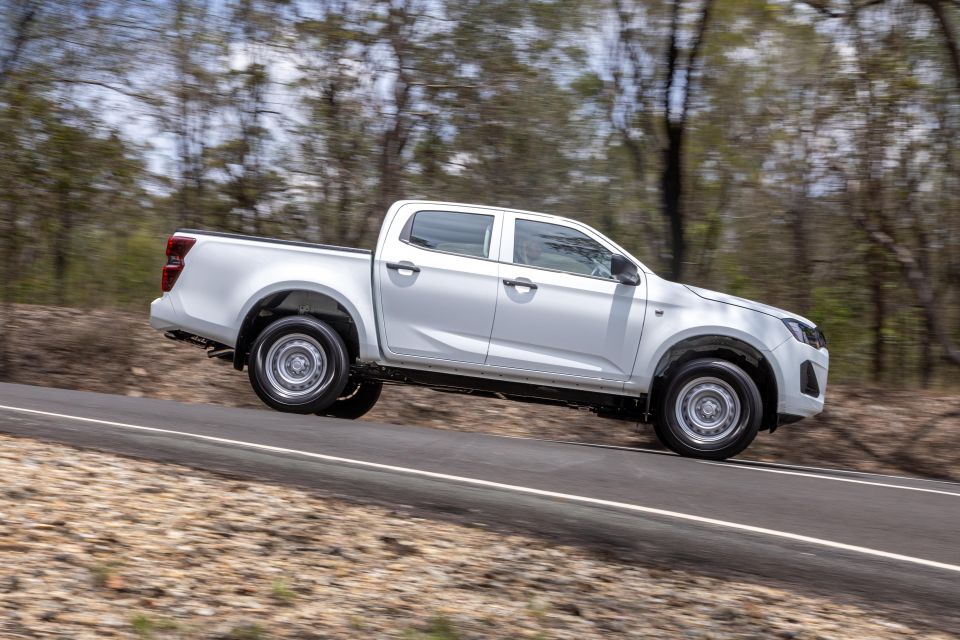
Acceleration with the 3.0-litre turbo-diesel does start to get a little slower and strained when you’re building up to highway speeds. The six-speed auto holds gears for a long time which causes the engine to drone almost like it has a continuously variable transmission (CVT).
While it wouldn’t hurt Isuzu to follow Ford and Volkswagen to offering a more gears – the Ranger has 10 – because the D-Max doesn’t quite have segment-leading torque, it does have enough to feel effortless in the right gear, at the right speed.
Once you’re at higher speeds the turbo-diesel engine finds a comfortable groove, which makes highway driving effortless and easy.
On the safety front the D-Max range now receives a stereo camera setup which has wider peripheral vision and depth perception. It can also identify pedestrians, cyclists, motorcycles, and other vehicles with greater speed and accuracy.
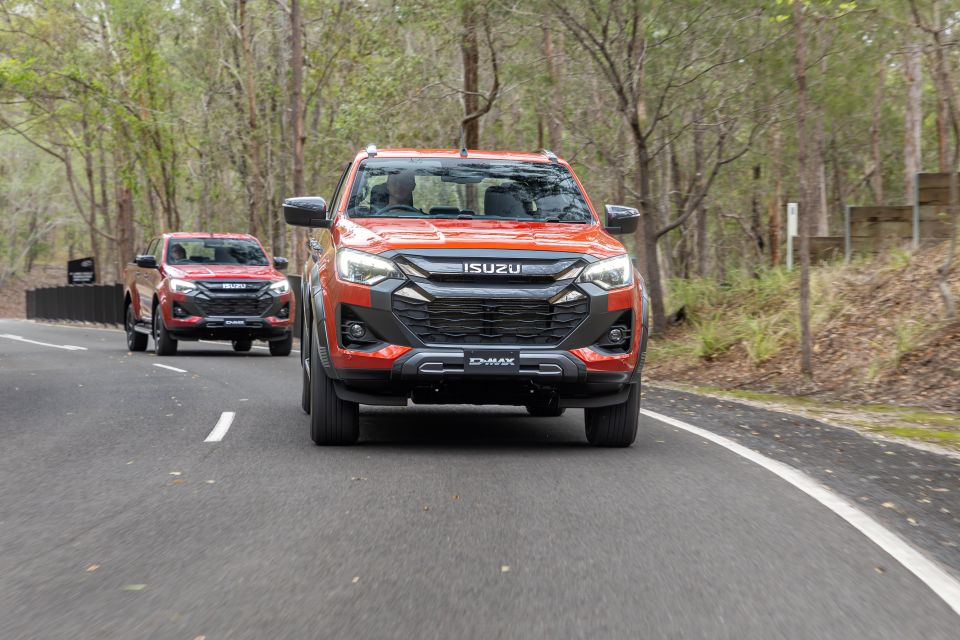
Another benefit is the camera unit has an inbuilt USB-A charging port which can be used to power aftermarket dash cams.
With this update adaptive cruise control is now standard across the entire D-Max range, including manual variants.
The adaptive cruise control system stays engaged when you press the clutch in to shift gears, which isn’t always the case in other vehicles.
All variants now also receive stop and go functionality with the active cruise control, and it can work in tandem with the traffic sign recognition system to quickly change the set speed when a new limit is detected.

Despite all these changes and tweaks to the adaptive cruise control system with this update, I found in practice it was rather underwhelming.
The system loved to creep above the set speed travelling along undulating roads or downhill. It also makes ABS-like noises when it does every clamp on the brakes to slow down.
The D-Max’s lane departure warning continues to be good at its job, acting when absolutely needed.
Isuzu has revised the D-Max’s lane-keep assist tune with this update, also making it standard on manual variants. It claims to now provides smoother steering intervention and tracks the centre of the lane better.
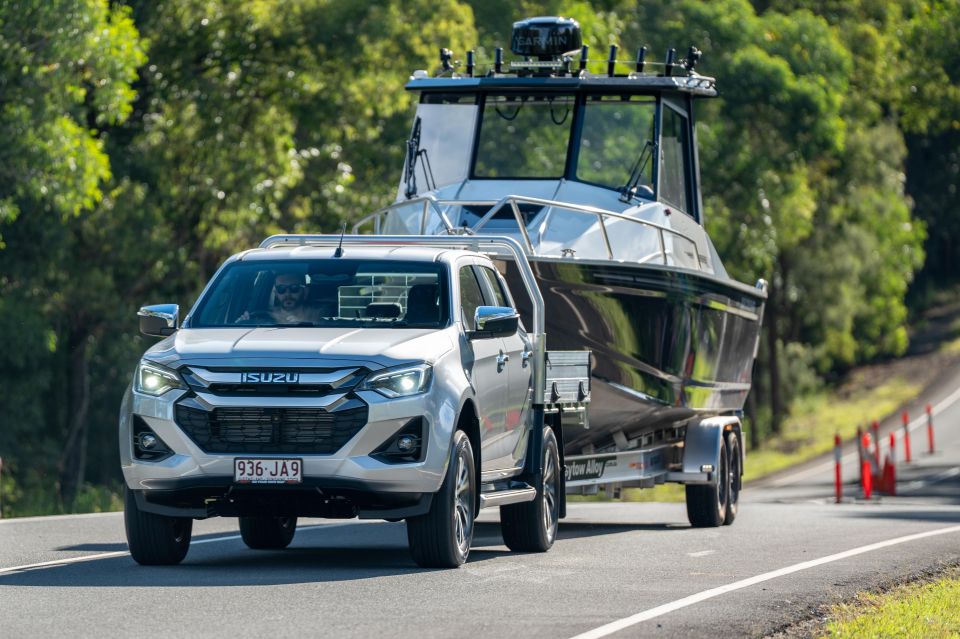
In practice the lane-keep assist function still isn’t perfect, meandering in the lane if left to its own devices. The system also disengages very quickly when it can’t see lane markings or when you turn the wheel past a certain degree.
Thankfully there’s a button on the steering wheel you can press to shut it all down.
The D-Max retains the same braked towing capabilities with this update. Variants with the 3.0-litre engine can tow a braked trailer up to 3500kg, whereas ones with the 1.9-litre can only tow 2800kg with the manual or 3000kg with the automatic.
During our testing we had the opportunity to tow two different caravans that weighed around 3000kg, as well as a boat on a trailer that weighed 3200kg, with a D-Max 3.0-litre automatic.
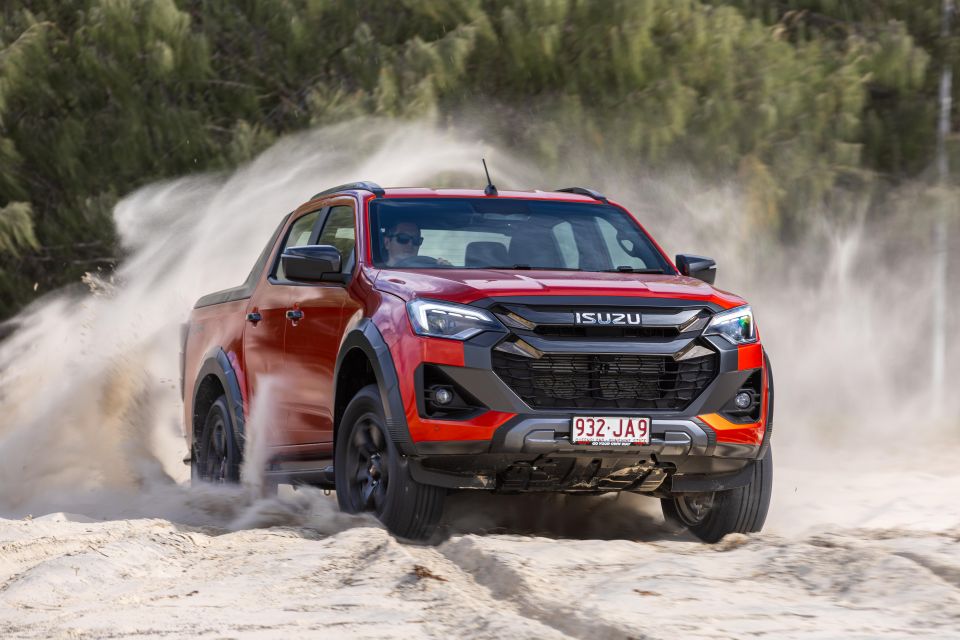
It performed all its towing duties very naturally. It’s not the quickest, but it felt stable from the driver’s seat. If you’re not careful the rear wheels will spin and get axle tramp if you floor it, however.
Something to note is the D-Max LS-U and up gets a tow bar receiver as standard, though no variant comes with a trailer brake controller as standard. It’s available as a genuine accessory for an additional $896.06.
You’ve waited long enough. It’s finally time to talk off-roading. The D-Max’s four-wheel drive dial is easy to find on the dash, and its operation is intuitive. The rear diff lock button is also logically placed.
Like before the D-Max still only has a part-time four-wheel drive system with 2H, 4H and 4L modes. You can switch from 2H to 4H on the fly at up to 100km/h on unsealed surfaces, but need to come to a complete stop to activate 4L.
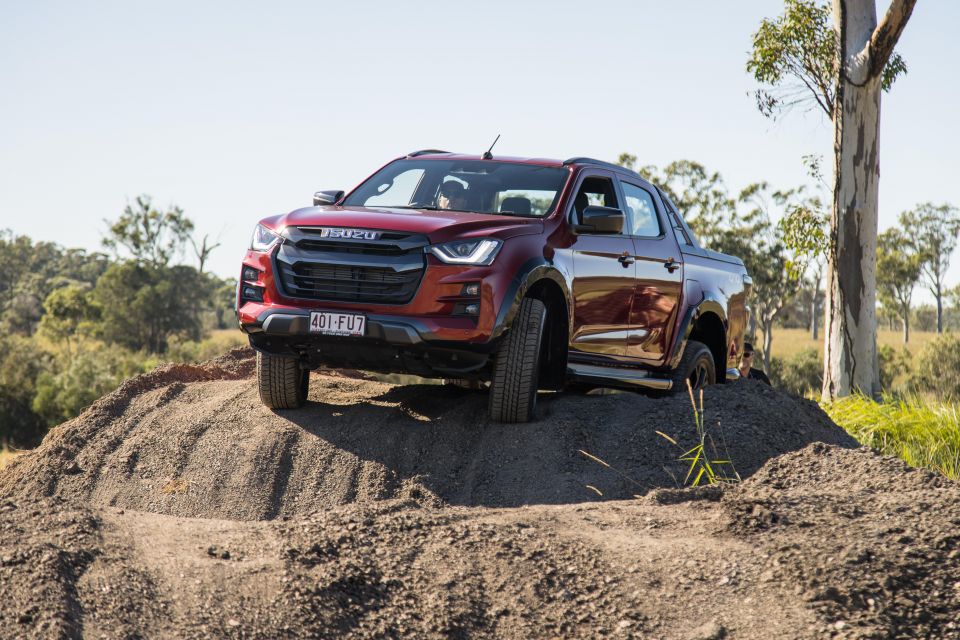
It would be nice if the D-Max had a full-time four-wheel drive system like the Ranger and Triton receives as it adds an added layer of security and grip when travelling on slippery sealed surfaces. You can’t currently drive the D-Max on sealed roads with four-wheel drive activated.
Off-road the D-Max is a very capable machine. Although the suspension tune isn’t the most dynamic on-road, this allows for more articulation off-road.
It can get through some pretty tricky off-road situations with 4H turned on, but once you engage 4L it can do even harder obstacles with ease.
With this update Isuzu has introduced a Rough Terrain mode, which is an electronic off-road traction control aid that first debuted in the current-gen MU-X in 2021.
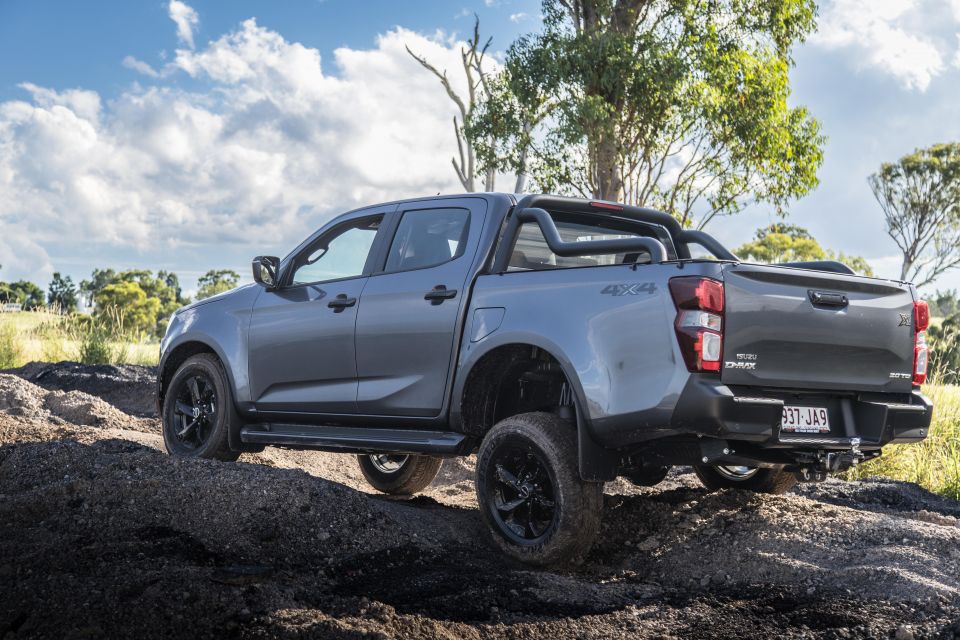
Unlike the system in MU-X however, the D-Max’s Rough Terrain mode is able to work with the rear differential locked, maximising traction.
Its impact on off-roading was most noticeable when going through moguls where a tyre was in the air. The locked rear axle meant both rear wheels would rotate at the same speed and the traction control shuffled torque to which front wheel had the most grip.
A total of six trim levels are offered.
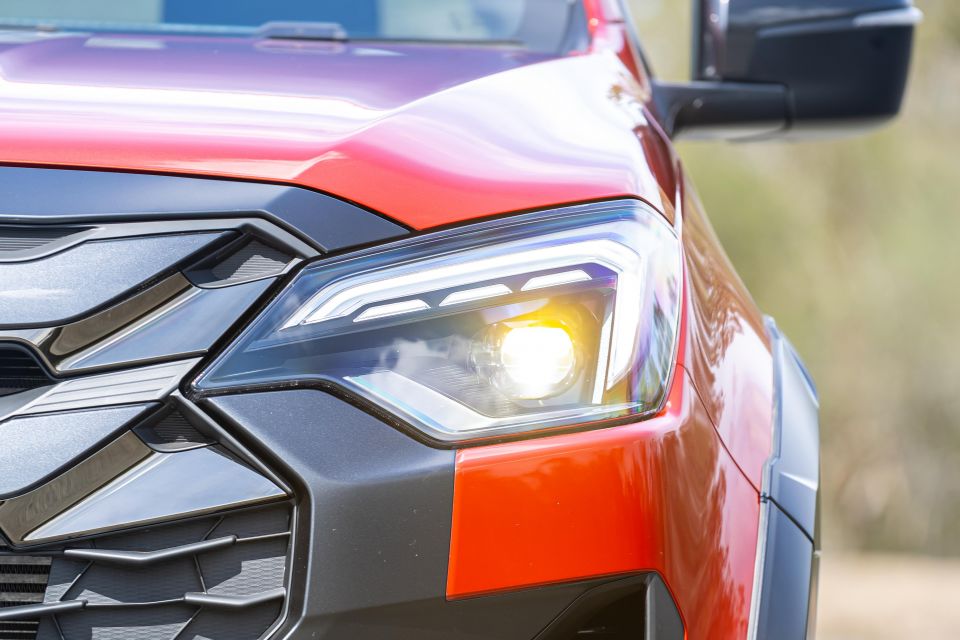

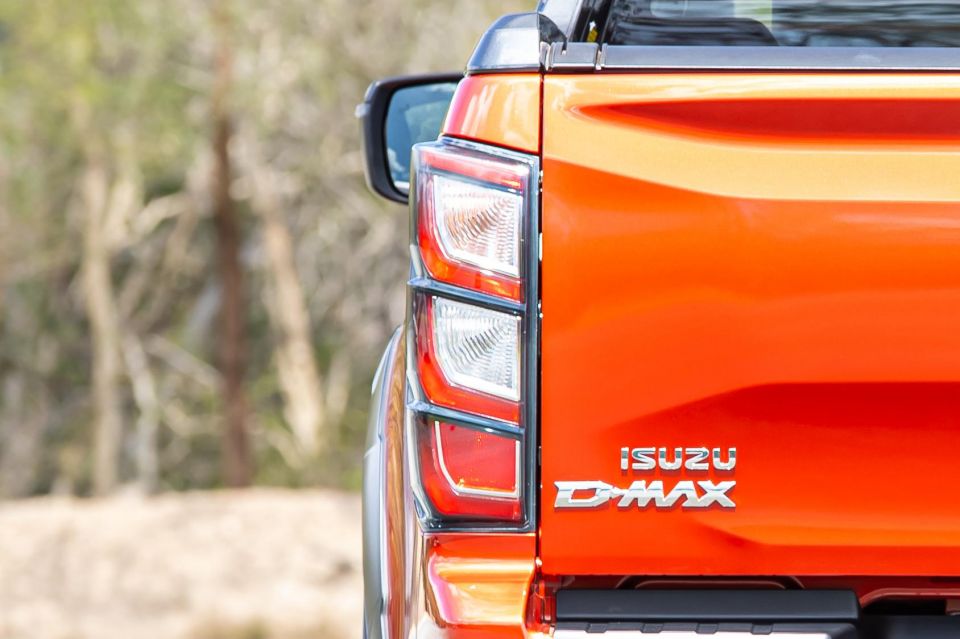
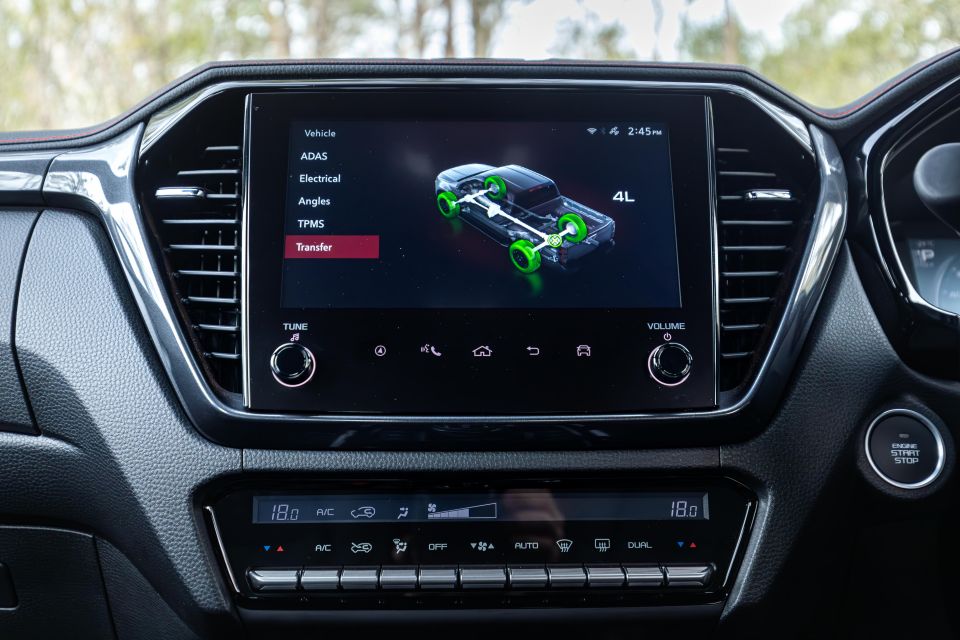
2024 Isuzu D-Max SX highlights:
D-Max LS-M adds:
D-Max X-Rider adds:
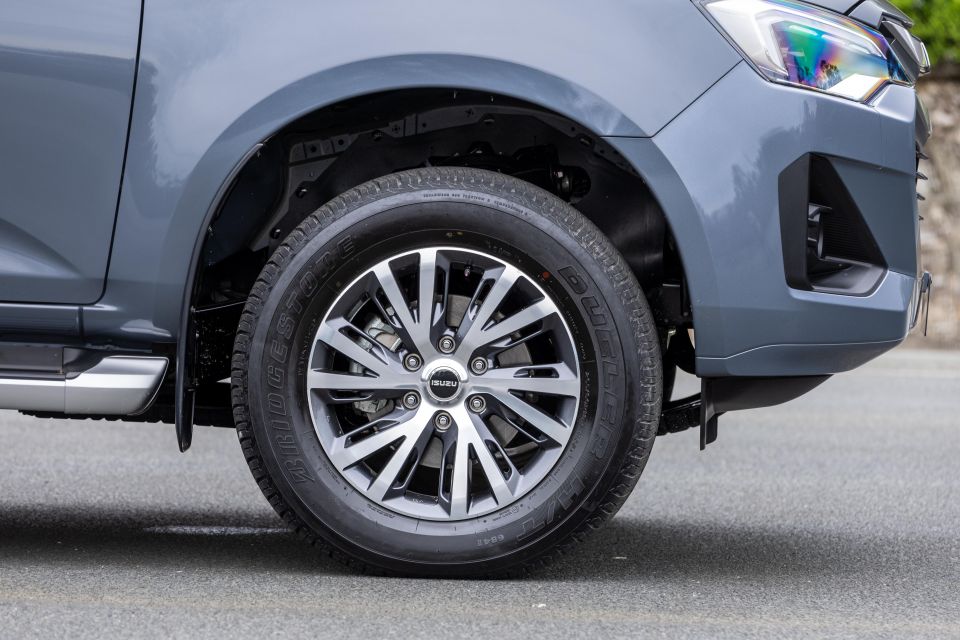
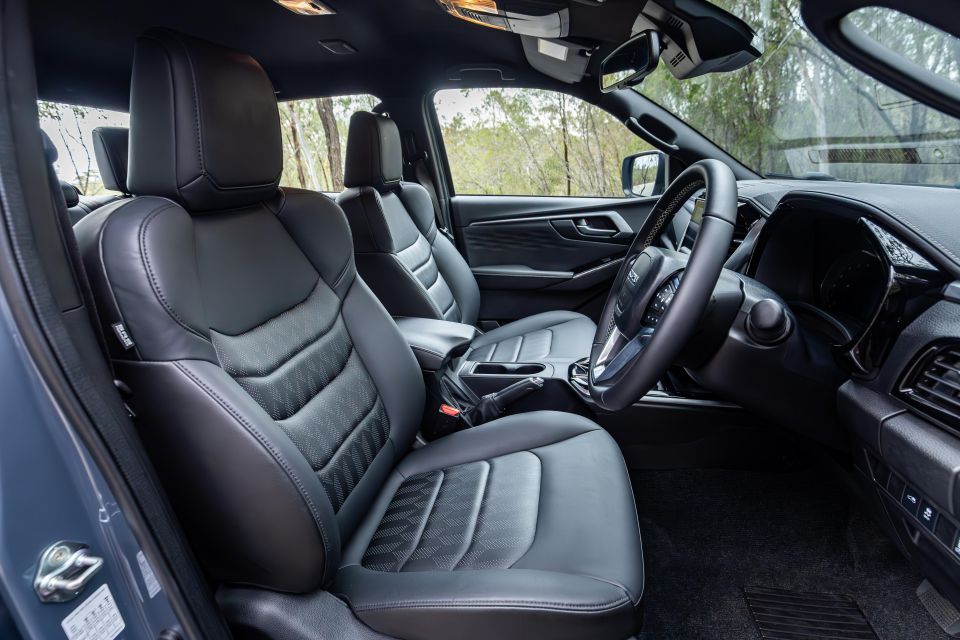
D-Max LS-U adds:
D-Max LS-U+ adds:
D-Max X-Terrain adds:
The Isuzu D-Max was tested by ANCAP in 2020 and earned a five-star rating. It received a design change to the driver’s knee airbag and instrument panel in July 2022 and was re-tested, maintaining its five-star rating.
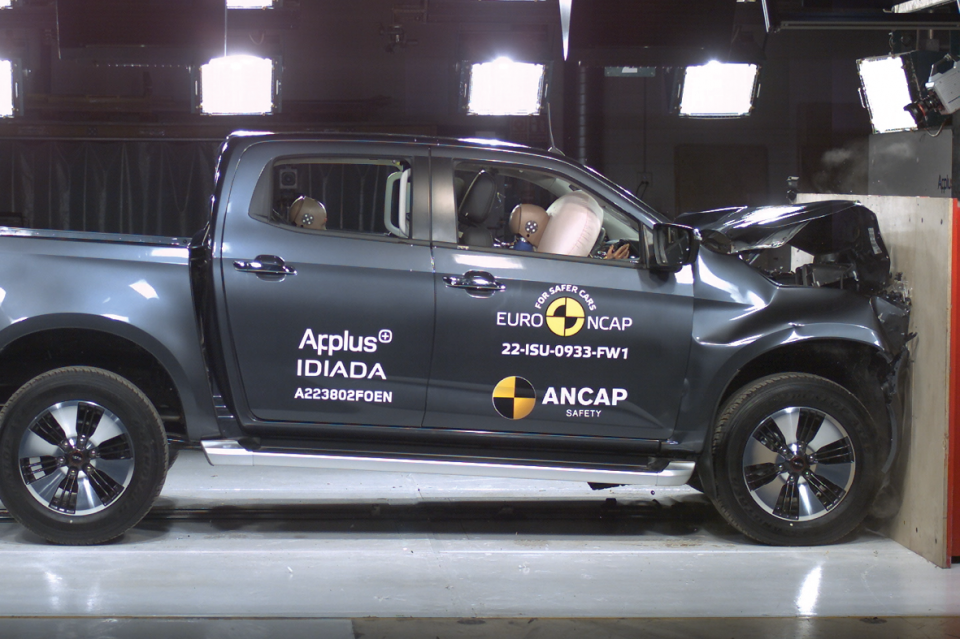
That rating was based on an adult occupant protection score of 86 per cent, a child occupant protection score of 89 per cent, a vulnerable road user protection score of 69 per cent and a safety assist score of 81 per cent.
Every model comes standard with the following safety features:
Automatic models also add wrong-pedal acceleration warning.
LS-M Ute variants add rear parking sensors, LS-U and up adds tyre pressure monitoring, and front parking sensors are reserved for the flagship X-Terrain.
The 2024 Isuzu D-Max covered by a six-year, 150,000km warranty. When you service on schedule at an Isuzu dealer, up to seven years of roadside assistance is offered.

Logbook servicing is required every 12 months or 15,000km, whichever comes first, apart from a complimentary three-month service.
Isuzu D-Max service pricing:
| Service | Price |
|---|---|
| 3 months/3000km | Free |
| 12 months/15,000km | $449 |
| 24 months/30,000km | $449 |
| 36 months/45,000km | $449 |
| 48 months/60,000km | $449 |
| 60 months/75,000km | $449 |
Buy your new car without the stress. It's fast, simple and completely free.

Great service from Travis and team, second time I have used this business would not hesitate to recommend them to anyone
Craig C.
Purchased a Ford Ranger in Sunshine Coast, QLD
CarExpert helped Craig save $7,224 on his Ford Ranger, now let us save you on your next new car.
Get your BEST priceAlthough it mightn’t look it on the surface, the Isuzu D-Max has received a considerable update with this latest update that make it an even more convincing offering.
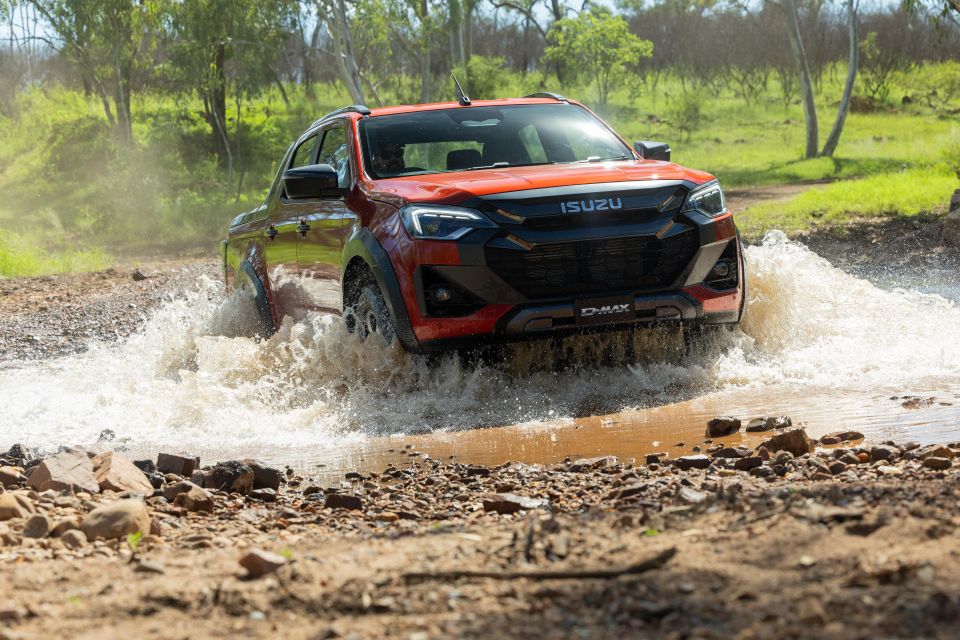
Outside, it’s nice to see the indicators be integrated into the headlight unit. The rest of the exterior design changes I could personally take or leave, but styling is subjective.
Inside, I like how Isuzu has listened to feedback and given the D-Max a new infotainment system, as well as a clearer instrument cluster setup. Despite the changes everything is still simple, logical, and works as it should.
Isuzu has done a good job bolstering the range of safety equipment across the entire lineup, and updating existing systems to make them more user-friendly. Adaptive cruise with stop and go, and lane-keep assist are welcome additions to the manual.
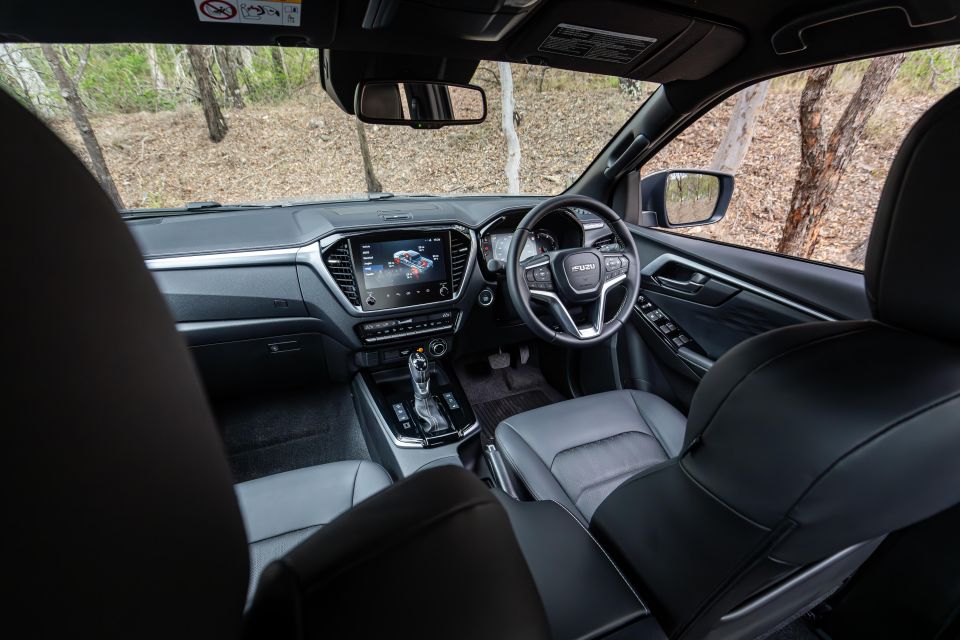
The inclusion of Rough Terrain mode has been needed for years, but given it works in tandem with the locking rear differential its functionality surpasses the MU-X’s.
Things aren’t perfect however as the price rises accompanying this update does start to hurt the D-Max’s value proposition, especially higher up in the range where 4×4 sales dominate.
Servicing costs are also now more affordable in the short-term, though if you own the ute for longer than five years you’re no longer covered by capped-price servicing unlike the pre-update model which had seven years of coverage.
Lastly, although Isuzu claims to have fixed the bump steer issue in the D-Max, I’m uncertain if a wheel alignment will fix the premature and uneven tyre wear on customer’s vehicles in the long term.
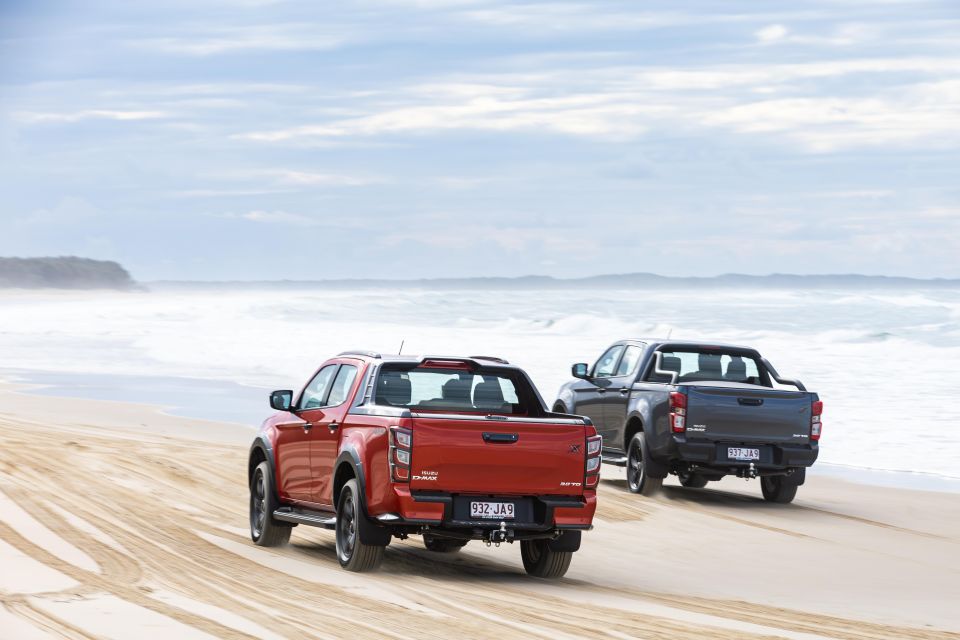
Click the images for the full gallery
MORE: Buy an Isuzu D-Max MORE: Everything Isuzu D-Max
Where expert car reviews meet expert car buying – CarExpert gives you trusted advice, personalised service and real savings on your next new car.
Jack Quick is an automotive journalist based in Melbourne. Jack studied journalism and photography at Deakin University in Burwood, and previously represented the university in dance nationally. In his spare time, he loves to pump Charli XCX and play a bit of Grand Theft Auto. He’s also the proud owner of a blue, manual 2020 Suzuki Jimny.


William Stopford
1 Month Ago


Paul Maric
24 Days Ago


Max Davies
19 Days Ago


Josh Nevett
11 Days Ago
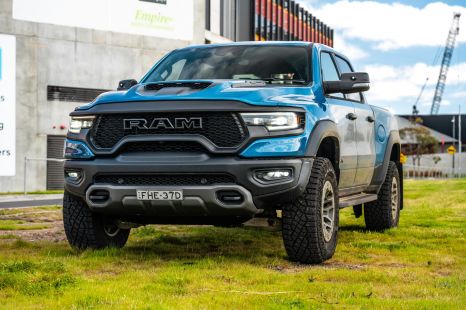

Max Davies
9 Days Ago
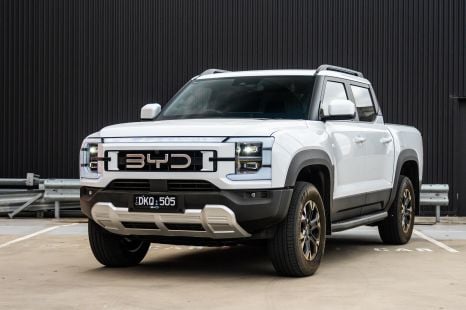

William Stopford
9 Days Ago